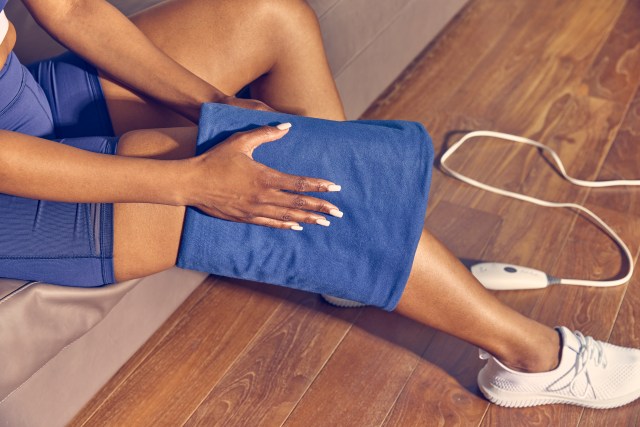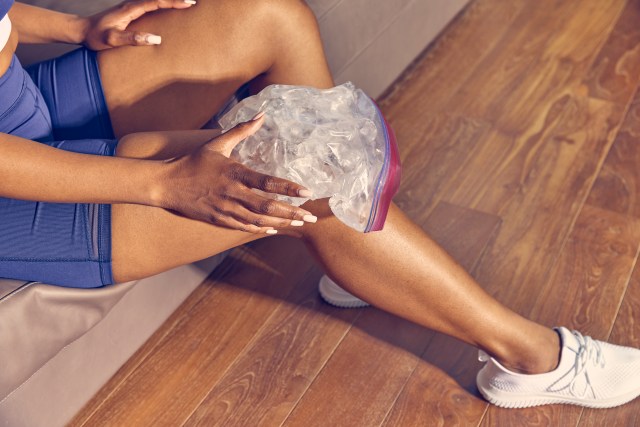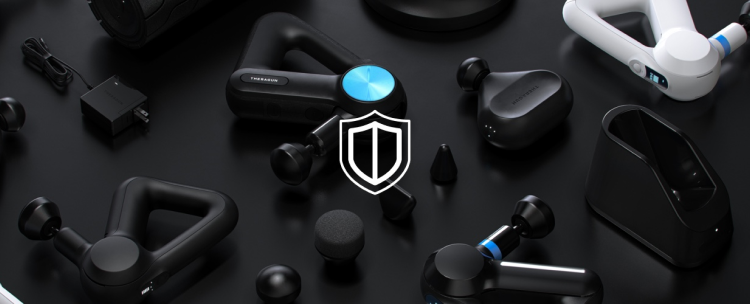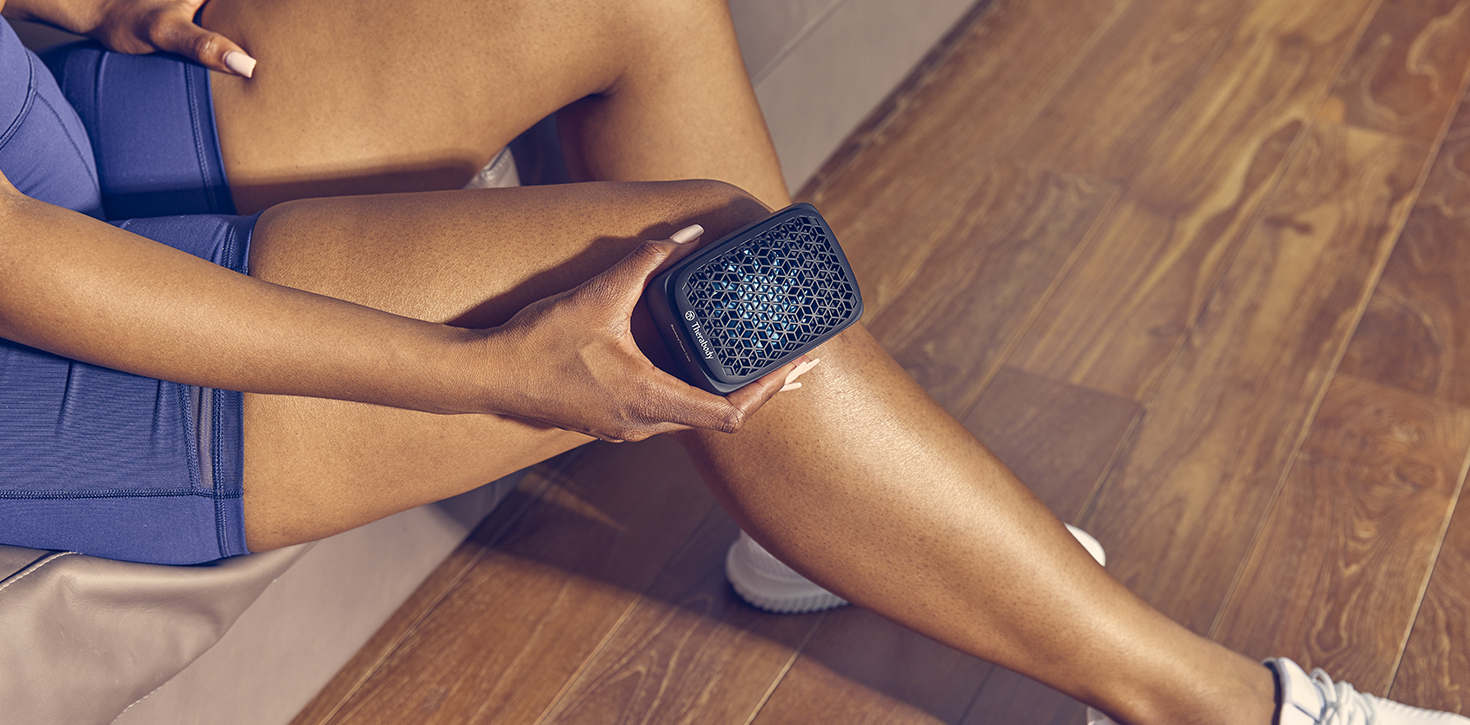Authors: Therabody Scientists: Tim Roberts, MSc; Kyle Silvey, PhD; Michelle Darian, MS, MPH, RD, LDN
Heat, cold, and contrast therapy have been used for centuries to treat and benefit ailments ranging from pain relief and swelling. The historical origins of hot (thermotherapy) and cold (cryotherapy) therapies can be traced back to ancient Greek and Egyptian civilizations. These cultures used natural heat sources like the sun, hot springs, hot sand, and cold therapies for various purposes, including pain relief, muscle spasms, and inflammation. [1]
Fast forward to the modern day; you likely reach for an ice bag or heat pack if you have an ache or pain. And while these therapies historically included messy ice bags and scalding heat packs, there are now simple, targeted devices to relieve aches and pains, inflammation, and more.
Heat, cold and contrast therapy have also piqued the interest of scientists who aim to understand the mechanisms and benefits behind heat and cold therapy that allow it to stand the test of time. Let’s dive into the science behind heat, cold and contrast therapy, detailing just now these ancient methods of healing benefit health today.
How Heat Therapy Works
Heat therapy, also known as thermotherapy, is a treatment that delivers consistent, localized heat to a surface on the body. Heat therapy expands, or dilates, blood vessels through a process known as vasodilation. Expanded blood vessels allow blood to flow more smoothly than constricted blood vessels. As blood flows more smoothly to the treatment area, nutrients and oxygen follow. Nutrients and oxygen can remove waste products contributing to stiffness, aches, and more. [2,3,4]
What Are the Benefits of Heat Therapy?
Research shows that heat therapy delivers many benefits to the body. Here are four science-backed ways that heat therapy can benefit health.
Improve Blood Flow
Muscle stiffness often occurs due to factors like poor blood circulation, muscle tension, and the accumulation of metabolic waste products. Think of your muscles as a complex network of fibers and cells that function at their best when relaxed and well-nourished. During strenuous workouts, muscle fibers contract and relax. During these contractions, your muscles work hard and produce force, and you use nutrients to do so. Muscles receive these nutrients through the blood. So, poor blood circulation to exercised muscles can leave them nutrient-poor, leading to stiffness and soreness. Heat therapy expands blood vessels (also known as vasodilation), improving blood flow and nutrient delivery to the muscle. [2,3,4]
Relieve Muscle Soreness and Stiffness
Completing a tough workout, a long day of activities, or exercising an untrained muscle can all lead to muscle stiffness and soreness. Decreased blood flow to recently trained muscles can lead to an accumulation of metabolic waste products. Metabolic waste and the absence of nutrient-rich oxygenated blood flow to muscles can lead to muscle soreness and stiffness. Heat therapy is scientifically proven to reduce muscle soreness and stiffness through improvements in blood flow. [4]
Reduce Muscle Aches and Pain
Muscle aches and pains are often a result of swelling and muscle spasms that place tension or pressure on muscle tissue. Heat therapy can help alleviate pain by increasing blood flow to the treated area. This enhanced circulation can relax muscles and reduce muscle spasms, decreasing muscle aches and pain. [4]
Improve Range of Motion Pre-Workout
Heat therapy can benefit the body pre-workout by improving range of motion. The thought here is that applying heat increases blood flow and induces muscle relaxation, both of which can increase range of motion. Studies suggest that heat therapy is most effective when accompanied by stretching. [5]

When To Use Heat Therapy
Heat therapy is best used to improve the following:
- Stiff muscles
- Sore muscles
- Long-term or persistent aches and pains
Avoid using heat therapy immediately following an injury, as it may increase swelling. [6]
Ideal Time and Temperature for Heat Therapy
Your blood vessels help to regulate your skin temperature and keep it around 91 degrees F. Increasing skin temperature through heat therapy can induce beneficial effects. [4] Here’s what studies show are the ideal treatment time and temperature to induce beneficial effects from heat therapy:
- Temperature: Aim for temperatures between 95 and 109 degrees F for heat therapy treatments. Avoid exceeding 110 degrees F during heat therapy; the recognized pain threshold for heat is about 112 degrees F.
- Time: The recommended heat therapy treatment duration is between 20-25 minutes to increase skin temperature effectively. [7, 8, 9]
How Cold Therapy Works
Cold therapy, also known as cryotherapy, is a treatment that delivers localized, and consistent cold temperatures to reduce pain, swelling and inflammation, aiding in injury treatment.
While heat therapy expands blood vessels, cold therapy narrows them through a process known as vasoconstriction. Narrowed blood vessels reduce the amount of blood that flows and enters a specific site. Injuries can cause fluid buildup, increasing swelling and inflammation. Reducing some of that blood flow can help to reduce swelling. [10]
What Are the Benefits of Cold Therapy?
Here are two science-backed benefits to performing cold therapy.
Reduce Inflammation
Cold therapy narrows the blood vessels (vasoconstriction), which reduces blood flow to the treatment area. During injuries, blood tends to flow to the impacted area, increasing swelling and inflammation. Using cold therapy following an injury narrows blood vessels, reducing blood flow to the impacted area, and can help to keep inflammation levels at bay. [10] It’s important to note that cold therapy can reduce swelling formation, making the timing of treatment (immediately following an injury) important for best results. [10]
Treat Injuries
Through cold therapy’s impact on reducing inflammation and swelling by restricting blood flow and accumulation, it can be an effective treatment for injuries. [11, 12]
When To Use Cold Therapy
Cold therapy is best used to improve the following:
- Immediately following an injury, for example, rolling an ankle
- Inflammation
- Swelling
Do not apply cold therapy on open wounds, and remove cold therapy if you lose skin sensation. [12]
Ideal Time and Temperature for Cold Therapy
Reducing skin temperature from 91 degrees F to below specific temperature thresholds can induce beneficial effects. [4] Here’s what studies show are the ideal treatment time and temperature to induce beneficial effects from cold therapy:
- Time: The recommended cold therapy treatment duration is between 15-20 minutes. [13, 14]
- Temperature: Aim for cold therapy temperatures around 45 degrees F without going lower than 32 degrees F, or a freezing temperature. Here are examples of how cold therapy can decrease skin temperature for beneficial effects:
- Inflammation: Studies show that reducing skin temperature to 59 degrees F can limit the formation of swelling, which can help to decrease inflammation levels. After a 20-minute cold therapy session, blood flow decreased by between 19-38%. [15]
- Pain relief: A skin temperature of 58 degrees F can help to relieve pain. [4]
- Decreased blood flow: A skin temperature of 57 degrees F can decrease blood flow, which is key in injury treatment. [4]
While these temperatures may seem uncomfortably cold, it won’t feel that way during the whole treatment. Cold therapy stimulates sensory nerves that can make skin feel cold, but sticking it out for 5-10 minutes can numb the treatment area and make you feel less cold. [4]

How Contrast Therapy Works
Contrast therapy is a treatment that exposes the body to both heat and cold therapy, alternating between the two. It’s an ideal recovery tool to use post-workout to maximize muscle and joint recovery.
Studies hypothesize that the health benefits of contrast therapy result from swapping between expanding (vasodilation) and narrowing (vasoconstriction) blood vessels. [14, 16, 17] The idea here is that heat therapy increases blood flow to sore limbs while cold therapy increases local blood circulation. Alternating between heat and cold therapies brings nutrient-rich blood to the limb while simultaneously reducing the build-up of fluid and inflammation.
What Are the Benefits of Contrast Therapy?
There are multiple benefits to both heat and cold therapy, so it’s no surprise that contrast therapy is scientifically backed. Here are the researched benefits of swapping between heat and cold therapy.
Relieve Aches and Pains
During contrast therapy, the hot temperature increases blood flow and relaxes sore muscles, while the cold temperature reduces inflammation and numbs the area, providing pain relief. [18, 19]
Improve Blood Circulation
Alternating between heat and cold therapy can cause blood vessels to expand (vasodilation) during the heat phase and contract during the cold phase. This pumping action can help improve overall blood circulation and promote nutrient and oxygen delivery to tissues, aiding in recovery. [20]
Reduce Muscle Soreness
After intense physical activity or exercise, contrast therapy can help reduce muscle soreness and speed up the recovery process. Heat relaxes muscles and encourages the removal of metabolic waste products, while cold reduces inflammation. [21]
When To Use Contrast Therapy
Contrast therapy is best when used to improve the following:
- Recover from strenuous exercise when muscles and joints tend to be stiff and sore
- To maximize muscle recovery
Avoid using contrast therapy immediately following an injury, as it may increase swelling. [6]
Ideal Time and Temperature for Contrast Therapy
Studies have tested a wide range of protocols to understand the optimal contrast therapy treatment time and temperature for maximum results.
- Temperature: When it comes to the optimal temperature for contrast therapy, there are two rules of thumb: opt for the highest and lowest temperatures and keep them consistent. Leveraging the highest heat and lowest cold temperatures helps induce contrast therapy’s pumping mechanism. Use a device with preset treatment temperatures that are validated as safe, for example, a cold therapy temperature of 45 degrees F and a heat therapy temperature of 110 degrees F. It’s also essential to keep the heat and cold temperatures consistent as you alternate between the two therapies to increase and restrict blood flow to the treatment area, which is where a device with specific presets is safer than therapies like ice packs and heating pads. [4]
- Time: Aim for a 3:1 heat-to-cold treatment time ratio. Total treatment times can range between 15-30 minutes. Skin temperature can continue to decrease even after removing cold therapy, making it take twice as long to bring the skin back to its baseline temperature. It should be accounted for when choosing a treatment time. [22]
How To Try a Heat, Cold, and Contrast Therapy Device
There are many ways to try heat, cold, and contrast therapy at home. For example, ice bags and heating pads can be an effective way to deliver heat and cold treatment to the skin. If you’re looking for a simple and effective way to start heat, cold, and contrast therapy, Therabody has you covered with RecoveryTherm devices. Using proprietary Cryothermal Technology™, RecoveryTherm devices deliver fast, precisely controlled heat, cold, and contrast therapy directly to the skin. Therabody’s latest RecoveryTherm product, RecoveryTherm Cube, uniquely delivers these three treatments in a single, wireless, portable device that can fit into the palm of your hand.
Key Takeaways
- Research-backed benefits of heat therapy include improving blood flow, relieving muscle soreness and stiffness, reducing muscle aches and pain, and improving range of motion pre-workout.
- Cold therapy is shown to effectively treat injuries and reduce inflammation.
- Contrast therapy, alternating between heat and cold therapy, is used to maximize muscle recovery.
- Therabody’s RecoveryTherm devices deliver fast, precisely controlled heat, cold, and contrast therapy directly to the skin.
References
- https://www.ncbi.nlm.nih.gov/pmc/articles/PMC1281398/
- https://pubmed.ncbi.nlm.nih.gov/20448028/
- https://pubmed.ncbi.nlm.nih.gov/11586349/
- Starkey, C. (2013). Therapeutic modalities. FA Davis.
- https://pubmed.ncbi.nlm.nih.gov/22814453/
- https://pubmed.ncbi.nlm.nih.gov/27036491/
- https://pubmed.ncbi.nlm.nih.gov/12741864/
- https://pubmed.ncbi.nlm.nih.gov/16558479/
- https://pubmed.ncbi.nlm.nih.gov/27424587/
- https://pubmed.ncbi.nlm.nih.gov/26725948/
- https://pubmed.ncbi.nlm.nih.gov/16558673/
- https://pubmed.ncbi.nlm.nih.gov/15085216/
- https://pubmed.ncbi.nlm.nih.gov/23364294/
- Denegar, C. R. (2000). Therapeutic modalities for athletic injuries. Human Kinetics Publishers.
- https://pubmed.ncbi.nlm.nih.gov/7943521/
- https://pubmed.ncbi.nlm.nih.gov/16558531/
- Prentice WE. Therapeutic modalities in sports medicine. 4th ed. St. Louis: WCB McGraw-Hill; 1999.
- elFatah et al., Effect of Cold Application Versus Contrast Hydrotherapy on Patients Knee Osteoarthritis Outcomes
- https://pubmed.ncbi.nlm.nih.gov/32745076/
- https://pubmed.ncbi.nlm.nih.gov/19675481/
- https://pubmed.ncbi.nlm.nih.gov/23626806/
- https://www.tandfonline.com/doi/full/10.1080/10833196.2020.1850163







